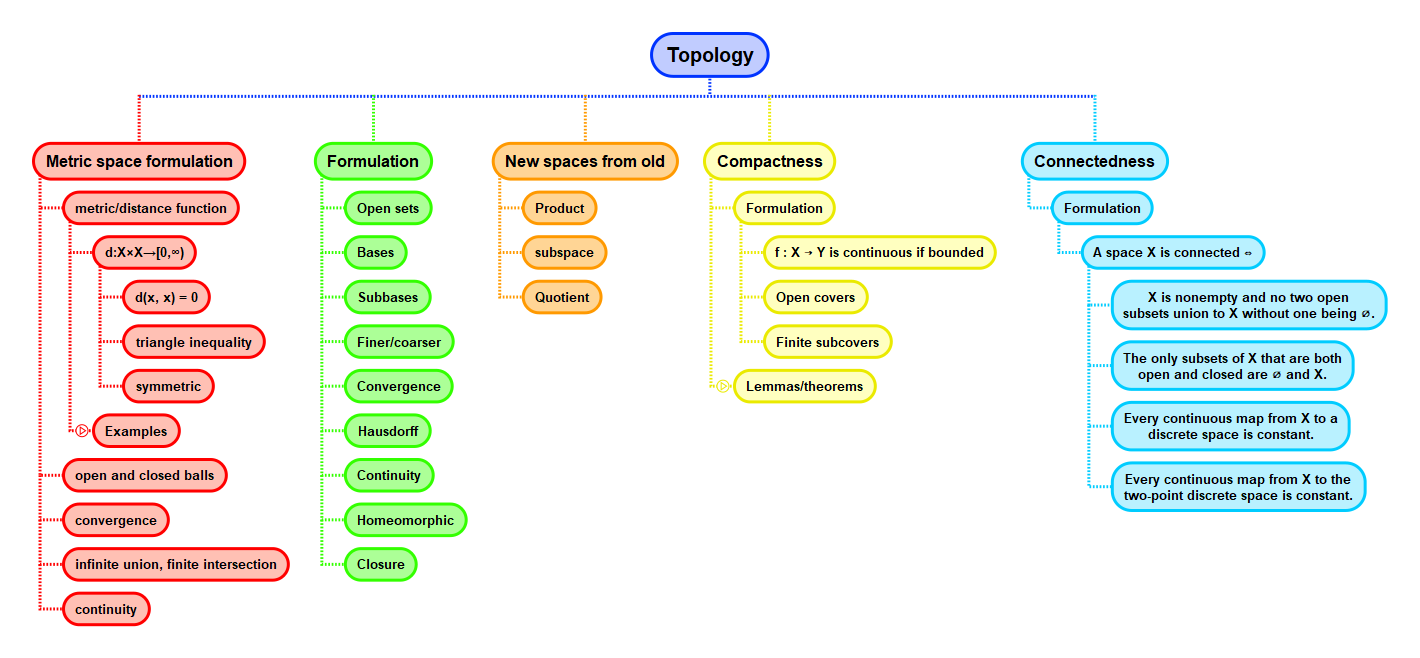Path connectedness. Definition
Viewing topology from the lens of Euclidean space suggests a variant of the notion of connectedness: path-connectedness.
The Euclidean lens
A topological space is said to be an n-dimensional manifold if it is Hausdorff and has an open cover by subsets each homeomorphic to an open ball in \( \mathbb{R}^n \). Typical examples of 2-dimensional manifolds (surfaces) are the sphere, the torus and the Klein bottle. Manifolds are enormously important.
Paths
Let \( X \) be a topological space.
A path in \( X \) is a continuous map \( \gamma : [0, 1] \to X \). If \( \gamma(0) = x \) and \( \gamma(1) = y \), then we say that \( \gamma \) is a path from \( x \) to \( y \).
Path-connectedness
A topological space \( X \) is path-connected if it is non-empty and for all \( x, y \in X \), there exists a path from \( x \) to \( y \) in \( X \).
The relevance to standard connectedness is quickly apparent:
Every path-connected space is connected.
Proof on reverse side. Note that the converse is false, and thus, path-connectedness is a stronger condition than vanilla conectedness.
Every path-connected space is connected. Proof.
We know that all continuous maps from a path-connected space \( X \) to a discrete space \( D \) are constant iff \( X \) is connected. Let \( f \) be an arbitrary continuous map from \( X \) to \( D \). Claim: \( f \) is constant. Let \( x, y \in X \). There is a path \( \gamma : [0, 1] \to X \) from \( x \) to \( y \), and \( f \circ \gamma \) is then a continuous map \( [0, 1] \to D \). But \( [0, 1] \) is connected, so \( f \circ \gamma \) is constant, and in particular, \( f(x) = f(\gamma(0)) = f(\gamma(1)) = f(y) \), as required.
Proving connectedness
It can be quite hard to prove that a space is connected by relying on the definition of connectedness. For example, how do you show that a disk in \( \mathbb{R}^2 \) doesn't have a separation? The implication from path-connectedness to connectedness can be very useful in such situations.
Example
Convex sets
A subset \( X \) of \( \mathbb{R}^n \) is convex iff for all \( x, y \in X \) and \( t \in [0, 1] \), we have \( (1-t)x + ty \in X \). For instance, the convex subsets of \( \mathbb{R} \) are precisely the intervals. Every convex subset of \( \mathbb{R}^n \) is path-connected (with \( x, y \in X \), \( t \mapsto (1 - t)x + ty \) is a path from \( x \) to \( y \)). Hence, every convex subset of \( \mathbb{R}^n \) is connected.
Geometrically, convex sets are those where every point in the set is connected by a straight line segment.
Context

